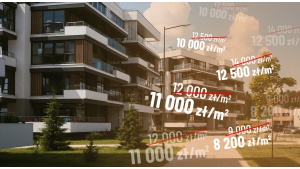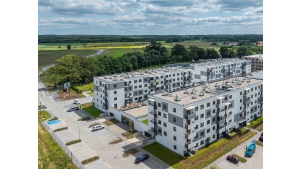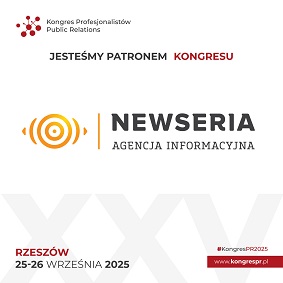Poland market overview – where to find opportunity?
Prestige PR
Włodarzewska 81C lok 81
02-393 Warszawa
i.wisniewska|prestigepr.pl| |i.wisniewska|prestigepr.pl
508 927 958
www.prestigepr.pl
ECONOMICS
The Polish economy grew strongly by 5.1% in 2022 (Eurostat) supported by an expansionary fiscal policy, a favourable situation in the labour market and the influx of the refugees from Ukraine. GDP growth was mainly driven by private consumption and inventories, which started to decline since the end of last year.
In 2023, amid muted global and euro area economic growth, Poland has been also experiencing a slowdown but a rebound in 2024 is expected with the highest increase projected for the CEE region.
The unemployment rate in Poland is at a historical low of 2.8% (July 2023), forecasted to increase to 3.2% in 2024 (Eurostat). Also wages are anticipated to maintain a robust upward trajectory.
Polish inflation has been declining in recent months as energy prices continue to normalise. After peaking at 18.4% y-o-y in February 2023, it further slowed to 10.1% in August and dropped to 8.2% in September. The downward trend in CPI is forecasted to continue. Oxford Economics expect Polish inflation to average 12.1% in 2023, before reaching 6.3% in 2024.
DOMINANT POSITION OF POLAND ACROSS THE CEE REGION
Poland holds a prominent position within the Central and Eastern European region (CEE), serving as a central hub for manufacturing operations, distribution, logistics, and various business support services. As a key market leader, Poland exerts a substantial influence on the economic development of the CEE region. With a transaction volume exceeding 800 million euros, spread across 33 deals, Poland has achieved in H1 2023 the highest performance, accounting for 37% of the total transaction volume in the CEE region.
SOLID FOUNDATIONS OF THE POLISH INVESTMENT MARKET
The Polish real estate market has solid foundations, and investors have proven to be highly adaptable, as evidenced by the results achieved in previous challenging years. In 2023 we are facing a significant slowdown. One of the factors contributing to the decline in the number and volume of deals in the first half of 2023 is the ongoing process of aligning price expectations between sellers and buyers.
On the other hand, the current moment presents a significant opportunity for strategic purchases, as market prices are becoming increasingly favourable.
CHANCE FAVOURS THE PREPARED MIND - WHERE TO FIND OPPORTUNITY?
Office sector
In the face of market uncertainty, many office investors turned to stable, core assets at the beginning
of 2022. Nearly 90% of EUR 2.1 billion transacted in offices in 2022 went towards core or core+ properties
confirming investors’ attitude to choose low-risk strategies. Nevertheless, H2 2022 saw a sharp increase
in opportunistic and value-add transactions, especially in Warsaw.
In 2023 investors’ focus shifted fully to Warsaw, where all office transactions in H1 took place. The transaction structure consisted of a mix of core+ and opportunistic assets, with plans for further redevelopment or change of function.
The active purchasers are foremost looking for discounts on properties. Also, the institutions are significantly less active and the private capital with “dry powder” is gaining momentum. We can also see smaller lot sizes being traded as well as there is more Polish capital in the market looking for good opportunities. With rising demand and growing scarcity of development land, such properties are starting to be more frequently of interest to residential developers. Moreover, many investors are seeing potential in converting older office properties into PRS & co-living projects, as office conversions can often be much cheaper and faster than developing them from scratch.
“One of the reasons for the reduced number and volume of transactions in the first half of 2023 was
the ongoing gap between sellers’ and buyers’ price expectations, high cost of financing and global bad perception of offices as stable investments as many companies still have not back to the office fully and employees prefer hybrid working. – explains Marcin Purgal, Senior Director, Investment at Avison Young - However, we can now see the first signs indicating that this situation may improve in beginning of next year and we anticipate that this will positively affect the number of transactions on all types of office assets, both in Warsaw and regional cities, but still with more focus on good, well located and cheap assets.”
Industrial sector
The industrial and logistics sector, the undisputed leader of 2021, responsible for over 50% of total
investment volumes, was significantly impacted by the price correction in 2022. Total industrial investment
volumes stood at EUR 2.0 billion in 2022, which represented a drop of over 30% when compared to the previous, record-breaking year. Although warehouses accounted for 54% of total investment volumes in H1 2023, only EUR 436 million were transacted in the sector. We did not witness any portfolio deals, and it is likely that the market will await the return of significant multi-asset transactions.
To minimize risk, investors are currently focusing on small-scale projects. In H1 2023, out of the 14 single-asset transactions, 12 were below EUR 50 million in value. The industrial sector is also currently witnessing many sale and lease-back transactions.
The new pricing dynamics may entice major warehouse developers to prefer acquisitions to new construction for expanding their portfolios in Poland. The costs of new developments are gradually approaching the attractiveness of acquisitions. Hopefully, the industrial investment market will continue its recovery trajectory and gradually address the pricing imbalance.
The rapidly growing e-commerce market with one day delivery is driving demand for the most effective
locations. Strong occupier demand for logistics and industrial space keeps vacancy rates at a very low level.
Rental rates in Poland have not yet experienced a significant surge, while the solid economy continues
to sustain cash flows. “With still relatively low rents compared to other European countries, Poland
attracts tenants and remains attractive for investors. In the upcoming months we should expect mainly
single asset transactions of industrial and logistics properties, both single and multi-let, located in the top
10 largest hubs in the country.” – comments Bartlomiej Krzyzak, Senior Director, Investment at Avison Young.
Retail sector
Despite the growing importance of e-commerce, still over 90% of retail sales in Poland is due to physical stores. Prior to the pandemic, the share of online purchases in total retail sales was at 5.6%. The highest figures were
observed during lockdowns – close to 12%. After the pandemic, the e-commerce share started to stabilise, reaching 7.9% in July 2023 (Statistics Poland).
Following the Covid-19 pandemic, we saw the resurgence of locality and convenience as a trend. People spent more time at home and visited small, local stores in the neighbourhood. The convenience shopping niche has been dynamically fulfilled by the small retail parks or small galleries, located near major roads or within housing estates. The tenant mix of such convenience centres enables quick, easy and everyday shopping. As small discounters dynamically expanded their stores mainly in small retail parks, big hypermarket operators started limiting their space.
Competitive prices and attractive locations of older shopping centres make them an interesting and higher-yielding alternative to modern retail parks for investors willing to engage in active asset management.
We anticipate that in the coming months the retail investment market in Poland will be dominated mostly
by opportunistic and “value-add” assets.
“Nevertheless, with a significant number of new convenience schemes and retail parks under construction, such
properties should also be of interest to more core investors, looking for stable investment products with
long WAULT.” – adds Artur Czuba, Associate Director, Investment at Avison Young
PRS sector
Currently, the PRS stock is concentrated mainly in Warsaw (41%), as well as in regional cities such as
Wrocław, Kraków Łódź, Tri-City, Poznań and Katowice. While Warsaw is the largest PRS construction site in
Poland, it is the regional cities that account for the highest number of new PRS projects - the amount of
flats under construction already exceeds the regions’ existing stock. This shows how strong the demand and
interest are in this sector in Poland, not only in Warsaw. According to investors’ announcements, the PRS will also start developing in smaller cities, as exemplified by the start of construction of around 400 flats in Lublin in August.
A prolonged war will mean high inflation, public debt and financing costs, and a tight labour market. On
the other hand, the influx of immigrants and the housing supply gap in Poland will further increase demand for PRS developments. Thus, the sector will continue to grow, and demand for rental units will remain at high level, exceeding existing supply.
In addition, due to the early stage of this sector, the Polish market is expected to attract both local and foreign investors, who can get higher rates of return on their investments than in other western European markets. Also rental rates offered in EUR, which are more common in recent years, appear attractive to potential investors, as they mitigate the risk of investing in PRS properties.
A significant impediment to the advancement of residential investments is the scarcity of available land in desirable locations within major Polish cities. Consequently, investors are actively exploring alternative strategies, such as acquiring parcels of land featuring older structures that can be repurposed or demolished. This has led to a burgeoning trend in the real estate market focused on property conversions.

Deweloperzy ukrywają ceny mieszkań. Z troski o klientów czy swoje portfele?

Więcej przestrzeni, mniej hałasu – dlaczego Polacy coraz częściej wybierają przedmieścia?

Jak czytać rzuty mieszkań i uniknąć przykrych niespodzianek? AI ułatwia wybór
Więcej ważnych informacji
 Jedynka Newserii
Jedynka Newserii

 Jedynka Newserii
Jedynka Newserii

Handel

Polskie MŚP otrzymają większe wsparcie w ekspansji międzynarodowej. To cel nowej inicjatywy sześciu instytucji
Firmy z sektora małych i średnich przedsiębiorstw otrzymają kompleksowe wsparcie na potrzeby zwiększania konkurencyjności na arenie międzynarodowej. Taki jest cel wspólnej inicjatywy instytucji zrzeszonych w Grupie PFR pod szyldem Team Poland. Obejmuje ona zarówno wsparcie kapitałowe, w postaci gwarancji, pożyczek czy ubezpieczenia, jak i doradztwo oraz wsparcie promocyjne i informacyjne, dzięki czemu mikro-, małym i średnim firmom łatwiej będzie podjąć decyzję o ekspansji zagranicznej. Pierwszy projekt dotyczy wsparcia dla firm zainteresowanych uczestnictwem w odbudowie Ukrainy.
Bankowość
RPP zgodna co do potrzeby obniżania stóp procentowych. Trwają dyskusje dotyczące tempa tych decyzji

W lipcu Rada Polityki Pieniężnej po raz drugi w tym roku obniżyła stopy procentowe, określając swój ruch mianem dostosowania. W kolejnych miesiącach można oczekiwać kolejnych obniżek, ale ich tempo i termin będą zależeć od efektów dotychczasowych decyzji i wzrostu płac. Docelowo główna stopa procentowa ma wynosić 3,5 proc. Te okoliczności sprzyjają kredytobiorcom.
Handel
Umowa z krajami Mercosur coraz bliżej. W. Buda: Polska nie wykorzystała swojej prezydencji do jej zablokowania

– Polska podczas prezydencji w Radzie UE nie wykorzystała szansy na obronę swoich interesów w sprawie umowy z krajami Mercosur – ocenia europoseł PiS Waldemar Buda. W jego ocenie polski rząd, mimo sprzeciwu wobec zapisów umowy, nie zbudował w UE sojuszy niezbędnych do jej odrzucenia. Porozumienie o wolnym handlu spotyka się przede wszystkim z protestami europejskich rolników, którzy obawiają się zalania wspólnego rynku tańszą żywnością z krajów Ameryki Południowej. Według europosła wszystko może się rozegrać w najbliższych tygodniach.
Partner serwisu
Szkolenia

Akademia Newserii
Akademia Newserii to projekt, w ramach którego najlepsi polscy dziennikarze biznesowi, giełdowi oraz lifestylowi, a także szkoleniowcy z wieloletnim doświadczeniem dzielą się swoją wiedzą nt. pracy z mediami.




![Część środków z Planu Społeczno-Klimatycznego trafi na walkę z ubóstwem transportowym. Organizacje branżowe apelują o zmianę priorytetowych projektów [DEPESZA]](https://www.newseria.pl/files/1097841585/rower3,w_85,_small.jpg)




.gif)

 |
| |
| |
|